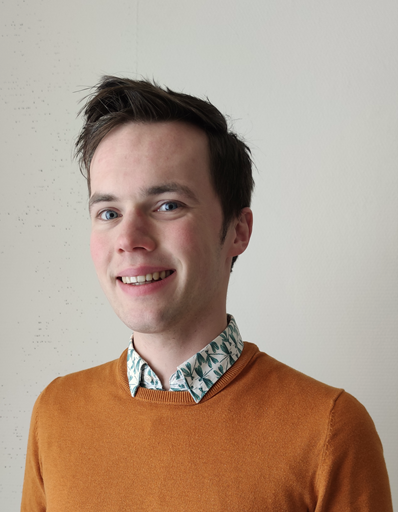Nico Overeem is a PhD student in the research group Molecular NanoFabrication. His supervisor is prof.dr. Jurriaan Huskens from the Faculty of Science and Technology.
His defense is planned for 26 February 2021 from 14:30.
Multivalent and dynamic interactions of the influenza virus at lipid membrane interfaces

Influenza A viruses are responsible for seasonal epidemics and occasional pandemics. These viruses originate in waterfowl but may adapt to humans after zoonotic infections. The surface of influenza viruses is decorated with two glycoproteins, hemagglutinin (HA) and neuraminidase (NA), that form the characteristic “spikes” and work together in host cell recognition. The receptors for HA are sialic acid-terminated glycans. NA binds to the same receptors and cleaves the sialic acid from the glycan. A functional balance exists between the binding and cleaving functions of the two glycoproteins that keeps the virus-receptor interactions dynamic. Additionally, the cleaving of receptors provides a driving force that allows the virus to efficiently cross the mucus, which is rich in decoy receptors. The receptor specificity on HA and NA is considered a key factor in the adaptation of the virus to different hosts.
A method is presented, called “multivalent affinity profiling”, to quantitatively assess the multivalent binding of influenza viruses on cell-mimicking surfaces. Inside a microfluidic device, receptor density gradients are formed on supported lipid bilayers. The binding of viruses on these receptor gradients is studied as function of receptor density, using fluorescence microscopy. The multivalent virus-surface binding has a threshold receptor density above which the binding becomes efficient, which is the hallmark of the multivalent nature of the binding process. Imaging virus binding on receptor density gradients allowed a direct visualization of the superselectivity of the virus.
Multivalent affinity profiling was used to compare the binding of an influenza virus to avian and human-type receptors of different lengths. A theoretical model is presented to calculate the avidity, the number of HA-receptor interactions, and their average strength from the threshold receptor density. This influenza virus had the same avidity for long avian and human-type receptors, but the avidity was much lower for short human-type receptors and only slightly lower for short avian-type receptors. The differences in avidity originate from intrinsic structural and energetic differences in the interaction of avian and human-type receptors with HA, which are translated through receptor length and density into virus specificity and avidity.
The threshold receptor density is stable over time and can be determined if the fluorescence from the virus is high enough and the local receptor density can be derived from the composition of the SLB. The threshold receptor density increases nonlinearly with flow rate due to the shear force exerted on the virus particles.
The influence of NA on the binding of influenza virus as a function of receptor density is studied by varying the concentration of NA inhibitor. With active NA, the virus has a higher avidity due to the contribution of NA to the binding, but the receptor-cleaving activity of NA lowers the receptor density. The virus binding is decreased overall but more strongly at low receptor densities, leading to an enhanced selectivity towards high initial receptor densities.
The new insights in the multivalent binding of influenza viruses may help to predict the tropism and assess the zoonotic potential of emerging influenza strains, when combined with quantitative glycomics. Multivalent affinity profiling may be used to assess the multivalent binding of other viruses as well, including SARS-CoV-2. Understanding the multivalent binding of viruses is a guiding motif in the development of broad-spectrum antivirals. Like viruses, targeted anticancer treatments can benefit from superselective binding. Multivalent affinity profiling can help in the design and development of superselective drug carriers.
His paranymphs will be:
Ruben Kolkman r.w.kolkman@utwente.nl
Erik Hamming p.h.hamming@utwente.nl

